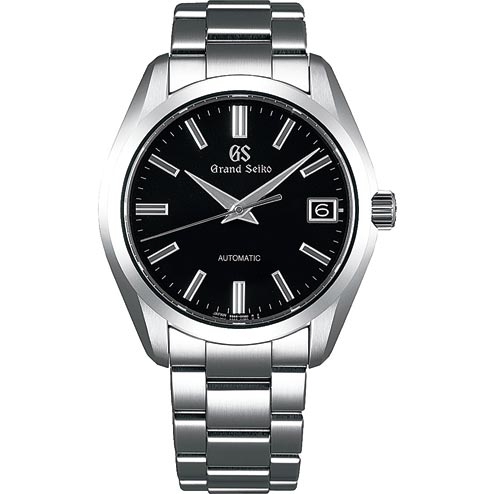In the world of luxury timepieces, 2017 was the year when watchmakers once again started veering around to the idea of simplicity and added a number of simple yet significant models to their portfolios. From Bulgari, Rolex, Omega and Grand Seiko to Nomos and Timex, there were simple and affordable — of course by the standards of that brand — new timepieces galore.

BIG WAS BEAUTIFUL
This was a fairly sharp turn from the broad trends that were prevailing even till the previous year. Then, the bigger the luxury wristwatch, the more traction it was getting with buyers. And if it had a handful of “complications” (that’s what watchmakers call any mechanism that’s intended to do things other than tell the time in a multifunction watch) thrown in, it was even more delectable.
With so much going on inside them, the watches were becoming bigger, thicker and increasingly more expensive. The less expensive brands took styling cues from the luxury models and there was a profusion of big wristwatches with lots of subdials, which found many takers. Watches that were close to two inches (45mm to 48mm) across and three quarters of an inch (about 18mm) thick became quite common.

BACK TO BASICS
While that trend hasn’t entirely gone away, there has been a whole bunch of new watches this year that are simple time-only or time-and-date models that almost border on the spartan. Many of them hark back to landmark past models, in name or design or both, from the same watchmaker. In other words, horological heritage has been brought out of the freezer, microwaved and displayed on shop windows.

MORE OF LESS
The shift wasn’t for nothing. Things weren’t hunky dory for the traditional luxury watchmakers. Adding functions such as a chronometer or a moonphase indicator or dual time, which demonstrated watchmaking capability, was pushing up costs and, therefore, prices of watches. Luxury watch exports from Switzerland (that’s the bulk of their sales) had been dropping and by the end of 2016 were back to the levels they were at half-a-decade ago in 2011.
Around the same time, smartwatches from the likes of Apple and Samsung were becoming popular as they could do things like track sleep, monitor health parameters and sync with smartphones (which mechanical watches couldn’t). And all that at a fraction of the cost of mechanical watches. A greater blow was that the smartwatches could change their look by changing the on-screen display and/or the strap and bezel. Some were like a dozen watches rolled into one, which appealed a lot to young buyers.
The luxury watchmakers, mostly from Switzerland and Germany, had to tick with GenY and make them pay the premium for their watches as well. For one, prices had to be competitive, which meant doing away with trappings and complications. Besides, in terms of functions, mechanical watches were no match for smartwatches at any price point. So the focus shifted back to things like style, elegance and, of course, something that no new watchmaker could hold a candle to — the patina of a hundred years or more of watchmaking heritage.
Be it the world’s biggest watchmaking conglomerate Swatch (which owns brands like Breguet and Omega) or smaller companies like Rolex and near-boutique operations like Bulgari, the idea for 2017 was to keep at least a part of their watch range simple. There had to be more of less.

OFF WITH THE FLAB
Stripping out the complications had other positives as well. With less machinery to accommodate, watches could be smaller. So case sizes slipped back to under 42mm with quite a few in the sub-40mm range. The Omega Railmaster, for instance, was one of the smaller pieces with a 38mm case. A smaller size also meant women could wear these watches.
And for the same reason that they could be smaller, watches could be thinner as well, something clearly demonstrated by the Bulgari Octo Finissimo Automatique. It took the 2017 crown of the world’s thinnest (2.23mm thick) self-winding (or automatic) movement currently in a watch. At first sight, though, it looks like a chunky sports watch with its case designed by the famed Gerald Genta. It comes with a small seconds dial. With only time to show, the diameter of the titanium case has been limited to 40mm.

WHO NEEDS PRECIOUS?
Among the significant launches this year have been the Rolex Datejust 41mm in stainless steel, a material that is gaining in popularity as it helps keep the price point way lower than they would be had the watch been made in gold or platinum. And as a wink to the precious metal cases, it is being offered with a fluted bezel in white gold as well, apart from a plain one in steel.
Tudor, the other brand in the Rolex fold, has come out with its own 41mm offering too in the time-only Tudor Black Bay 41. Sporting styling that’s a cross between a diver’s watch and a sports watch, it is another of the smart, no-frills timepieces out this year.
Grand Seiko, which has been making high-quality watches for close to 60 years, is now an independent brand. The Grand Seiko SBGR307 and SBGR309 are two very elegant time-and-date watches in steel in 42mm cases. While the first comes with a silver dial, the second is the more striking one in black. If the Grand Seikos are falling back on Sixties chic, the Nomos Glashutte Club Campus 38mm is simple, stylish and almost Bauhaus. Its California dial has a funky mix of Roman and Arabic indexes and the styling is free of fuss.
PAST IN PRESENT
At 40mm, the Longines Heritage 1945 is a throwback, almost a perfect replica, of one of the company’s vintage timepieces. With blued steel hands, a seconds subdial, and indexes painted on a copper dial, this is all about nostalgia.
Zenith gave its own twist by resizing its vintage-style 45mm Pilot Type 20 to 40mm and changing the case from bronze to ‘aged steel’. What we have now is the smaller and less expensive Zenith Pilot Type 20 40mm, that too in red, blue, khaki and green!
.jpg)
PIECE DE RESISTANCE
The way it stands today, one can pick pretty much any brand and it’s likely that they have brought out a time or time-and-date watch this year, most likely in steel. But one watch that warrants special mention is the recently unveiled Timex Marlin. This 34mm watch is a reissue of a model of the same name that this British maker of everyday watches made in the 1960s. It comes with a steel case and a mechanical movement (one needs to wind it every day). And its sunburst dial, sword hands and indexes are as vintage as they come. It costs all of $200, looks like a million dollars and has gone out of stock already. We cannot wait for the next lot!
GOING FORWARD
The watchmakers’ strategy seems to be working as luxury watch exports from Switzerland are gradually clawing back up and, in October 2017, finally registered a growth over the previous year’s level. The turnaround is being fired by models in steel, that accounted for a bulk of the annual spike. In terms of prices, it’s timepieces in the 500-3,000 Swiss franc (about Rs 32,500-Rs 1.95 lakh) range that are driving this comeback. With the fightback well and truly on, one could go on listing out these basic but stylish models that we’ve seen this year — like the steel 40mm Chopard L.U.C. XP, or the 39mm Tag Heuer Carrera Calibre 5 automatic. And there’ll be more coming.
Text: Abhijit Mitra










